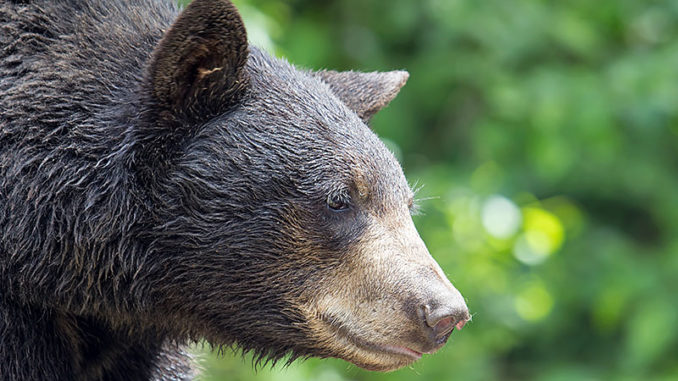
Black bears (Ursus americanus) are highly adaptable creatures, and can be found all across North America. As their name implies, they are usually black, but in some remote locales, they vary from white to bluish to cinnamon in color.
Black bears are the least aggressive of all bears found in North America. Usually shy and pensive, they do their best to avoid confrontations with humans, although their fondness for picking through garbage cans often gets them into trouble.
They usually live in wooded areas, or at least the outskirts of forests. Their diet consists of a wide variety of foods. Numerous plants, fruits, berries and nuts make up a good portion of their diet, but they can also eat any type of meat. Grubs, worms, lizards and frogs are on their menu, and they also sometimes eat rabbits, birds and rarely small mammals like deer fawns. Fish are also a big part of many a black bear’s diet.
Subspecies
Wildlife biologists have identified as many as 16 subspecies of the black bear, but some controversy exists in classifying them all. Most simply have different color phases, however the Louisiana black bear is one subspecies that seems to have characteristics that set it apart from other black bears. These include a longer and narrower skull and longer molar teeth.
Also, many Louisiana black bears have white patches on their chests. While this trait is seen in numerous black bears throughout North America, the percentage is higher in Louisiana, according to some wildlife biologists.
The Eastern black bear is another subspecies that often sports the white chest patch. Eastern black bears are among the largest subspecies of black bears, with numerous specimens reaching more than 800 pounds.
Native to North America, the black bear is ironically more closely related to the Asian black bear than to any other bears that exist in North America.
Females begin giving birth at around 4-years-old, and can have a litter of one to five cubs. The cubs stay with the mother for about 17 months before striking out on their own.
In the wild, the average black bear lives about 10 years. In areas with long hunting seasons, this is often lower. Numerous black bears have been recorded to live as long as 30 years.
Black bears do not hibernate in winter, but instead spend lots of time resting in their den, often venturing out in between denning periods.
The post “Species Spotlight: American black bear” first appeared on CarolinaSportsman.com.